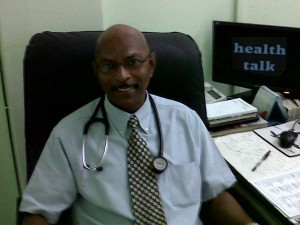
A guest article by Alexandra Johansson and Kirsty Toms
Many people visit their doctor’s office to ask for a ‘scan’. Here are some myths and facts about the different types of scans available, when they are useful and why you don’t always need one!
MYTH: ALL SCANS ARE X-RAYS
Plain X-rays and CT scans use X-ray radiation whereas other scans don’t. An X-ray gives you one image, for example of your chest or a limb. A CT scan on the other hand takes many X-rays which are processed by a computer to give multiple pictures of the body. CT scans give far more detailed views, but they also expose you to much more radiation. This radiation dose depends on which part of the body is being scanned. For example, a CT scan of the chest exposes you to 70 times more radiation than a plain chest X-ray.
Other types of scans, such as ultrasound and MRI scans, don’t use X-rays. Ultrasound scans use sound waves and MRI scans use magnets.
FACT: DIFFERENT TYPES OF SCANS ARE NEEDED TO IMAGE DIFFERENT PARTS OF THE BODY
Because scans work in different ways they are good at looking at different parts of the human body.
X-rays are useful for looking at bones, so are commonly used if you might have a fracture for example. Chest X-rays are good for examining the lungs and the size of the heart. Abdominal X-rays are only needed if your doctor suspects a few rare conditions – most of the time your bowels will not show up as the structures are too similar. Barium meals and enemas are useful for looking at the digestive system. A harmless dye makes the organs visible on a series of X-rays. A radiation-free alternative to this is to pass a camera though the digestive system – known as an endoscopy or a colonoscopy.
CT and MRI scans are useful for looking at the body in more detail. They are crucial for imaging the brain (which you can’t see on other scans because of the skull) and staging cancers. Your doctor can advise you as to which one is most suitable for you.
Ultrasound scans are used to look at abdominal organs such as the liver and kidneys. Some other uses include examining the heart (known as an echocardiogram), measuring blood flow through blood vessels and staging pregnancy. They are not good for looking at bones.
MYTH: ULTRASOUND SCANS ARE ONLY USED FOR PREGNANT WOMEN
Ultrasound is often one of the first scans used in any age group and in both genders. As mentioned above it can be used in many conditions and has the advantage of being radiation free.
MYTH: A SCAN WILL ALWAYS SHOW WHAT IS WRONG WITH YOU
There are many conditions that will not show up on any scan. Fortunately, doctors have other investigations such as blood tests and other instruments and equipment to diagnose these conditions. Some conditions are diagnosed based on your symptoms alone, for example migraine. So remember, you don’t always need a scan to get a diagnosis!
FACT: SCANS CAN HAVE IRRELEVANT FINDINGS
Sometimes when you have a scan, it can show an abnormality which is totally unrelated to your original problem. This can be in another body part or organ. These could be harmless anomalies but may trigger further investigations. You may never have known had you not had the scan – this can cause unnecessary worry and added cost if it does indeed turn out to be something harmless.
FACT: SCANS SHOULD BE INTERPRETED BY A SPECIALIST
Although all doctors are trained to interpret basic X-rays, they might miss some finer details which a specialist, known as a radiologist, would pick up on. Radiologists also have high levels of expertise in interpreting complex scans like MRI or CT scans. They will generally write a report about your scan, so it is important to keep this safe and pass it on to your doctor.
FACT: SCANS CAN HAVE SERIOUS SIDE EFFECTS
The radiation given off during X-rays and CT scans won’t make you grow extra limbs or turn green, but can have some worrying and less obvious side effects! For example, multiple exposures to X-ray radiation put you at an increased risk of developing cancers. People can also be allergic to certain dyes used in MRI and CT scans. Furthermore X-rays, CT and MRI scans are all unsafe during pregnancy as they can cause deformities and developmental abnormalities.
MYTH: I WOULD KNOW RIGHT AWAY IF I WAS EXPERIENCING SIDE EFFECTS FROM A SCAN
The radiation side effects mentioned above tend to develop over long periods of time, especially if you are exposed to radiation on multiple occasions. You won’t feel the radiation or get any obvious symptoms like pain or skin rashes.
An example of the harmful, yet insidious nature of radiation exposure is the case of Marie Curie. She was one of the first researchers into radiation and kept a piece of radioactive material in her desk as she liked the interesting glow it gave off. Sadly she developed radiation-induced bone marrow problems and died as a result of this.
In conclusion, scans are incredibly helpful diagnostic tools when used correctly. However, if you don’t need a CT Scan, X-Ray or MRI there is no reason to expose yourself to radiation or pay good money to do an Ultra Sound Scan that really may not be necessary, but which is a popular test everybody has told you about.
Alexandra Johansson and Kirsty Toms are medical students at the University of Glasgow in Scotland, on attachment with Dr. Emanuel for the month of August.
See you next week.

Very informative Doc. Thank you for continuing to educate us